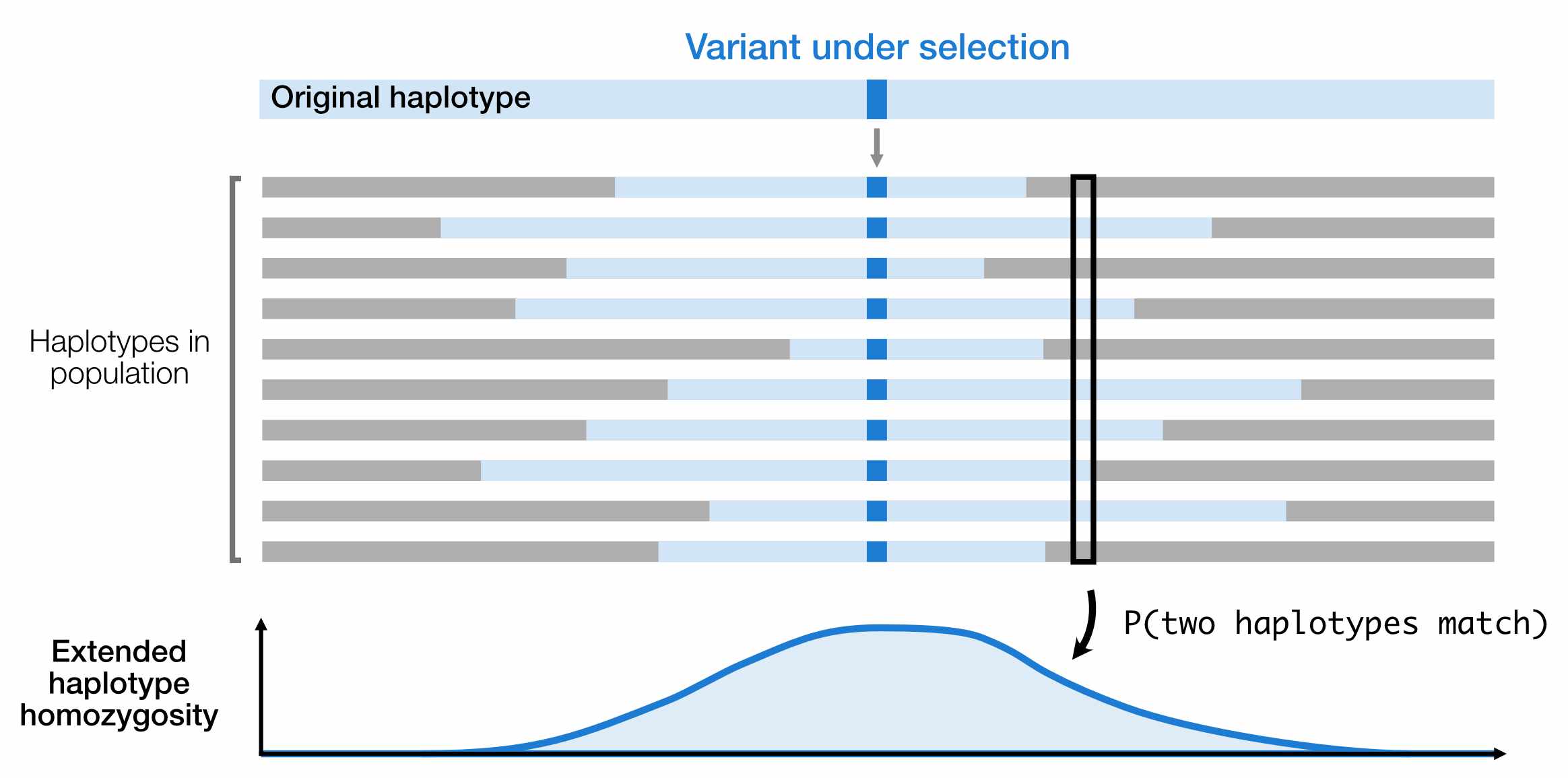9.20 Extended haplotype homozygosity
The haplotype-based class of selection statistics quantifies long haplotypes that result from a selective sweep.
Extended haplotype homozygosity (EHH) is defined as the probability that any two haplotypes in a population are homozygous at SNPs in specific genomic region. EHH should be elevated in regions under historical selection, because a sweep causes one haplotype to rise to high frequency, and decay as you move further from the site under selection.

Fig. 9. EHH measures how likely two haplotypes are to carry the same variant at a given location – a signature that we expect recent selection to exaggerate.